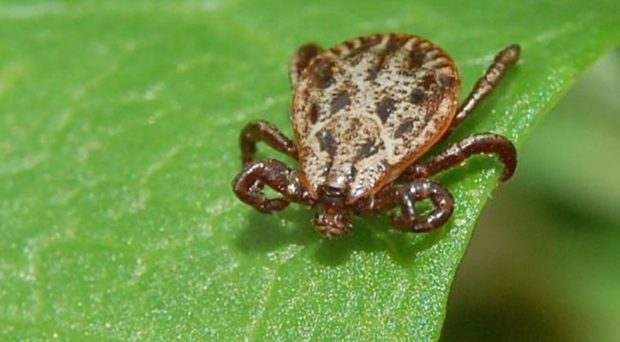
It has been established in the last few decades that Vector-borne diseases (VBDs) are on the rise, in part due to the expanding geographic range of the hosts that transmit these diseases (vectors).
Ectoparasites, such as ticks, are no exception – species such as Rhipicephalus microplus, Amblyomma Americanum, A. maculatum, and the Asian longhorned tick Haemaphysalis longicornis have demonstrated rapid expansion in their distributions, and invasion into new areas.
The spread of VBDs and their vectors, such as ticks, generally occur via long-range dispersal and subsequent local expansion, or by gradual expansion often associated with environmental and socioeconomic changes frequently influenced by anthropogenic factors (e.g. climate change, change in land use practices, and increasing urbanisation).
Dermacentor reticulatus, the ornate dog tick (also known as the ornate cow tick, meadow tick or marsh tick), is one such tick that has a rapidly expanding distribution in Europe. D. reticulatus primarily makes use of rodents and larger mammals, such as dogs, roe deer, red deer and wild boar, as hosts. Dogs have been found to play an important role in the life-cycle of the tick, particularly in urban areas. It is distributed across much of Europe, from northern Spain to the Netherlands, and from the U.K to the Baltic States and Russia.
D. reticulatus is an important vector of several pathogenic organisms, including Babesia caballi and Theileria equi (causative agent equine piroplasmosis), Francisella tularensis (Tularemia), Coxiella burnetti (Q fever), and several Rickettsia species, including R. slovaca and R. raoultii (tick-borne encephalitis). D. reticulatus is also the only confirmed vector of canine babesiosis, caused by Babesia canis, a potentially fatal disease in dogs and other canines.

A recently published study conducted by Ondřej Daněk and colleagues aimed to investigate and redefine the distribution of Dermacentor reticulatus across the Czech Republic using a nationwide citizen science campaign and ‘traditional’ sampling. They also aimed to determine the prevalence of Babesia canis in D. reticulatus ticks.
The citizen science campaign, called “Najdi pijáka”, was advertised at a national level using various media source for maximum citizen exposure. In addition there was a website and Facebook account for educating participating citizens on tick morphology and how to send in discovered ticks. Participants sending in ticks were asked to provide site information, such as the date of discovery, host association, and travel history of the associated host.
‘Traditional’ sampling by scientific researchers was also undertaken to expand the dataset of ticks and supplement the citizen science campaign, as well as for B. canis detection.
Geographic distribution of Dermacentor reticulatus and detection of Babesia canis
The citizen science campaign was a great success, with a total of 558 photo reports and 250 tick specimens submitted. Of the ticks that were sent in, 93.1% were morphologically identified as D. reticulatus, in addition to Ixodes ricinus and Hyalomma spp.
The citizen science campaign reported Dermacentor ticks in all 14 regions of the Czech Republic, with the majority reported from South Moravia (70.4%), and the second most from the Ústí nad Labem region in Northern Bohemia (9.4%).
D. reticulatus has been reported in South Moravia as early as 1952, and a comprehensive study conducted in 2011 demonstrated D. reticulatus was only present in South Moravia, and thus the distribution of the tick is clearly expanding due to increasing reports in Northern Bohemia.
Molecular methods indicated that 2.81% (22/783) of collected adult D. reticulatus ticks were positive for Babesia canis. Nineteen of the 22 were sent in by citizen scientists, and 17 of those were reportedly found on dogs.

Previously, B. canis cases were considered as imported infections, however based on findings presented here it seems B. canis is now endemic and established in Dermacentor ticks and domestic dog populations in Czech Republic.
As the number of potentially infected dogs in minimal (17), it’s possible other wild canids, such as the grey wolf, Eurasian jackal and the red fox, in the Czech Republic and surrounding countries, may be maintaining the B. canis life cycle. This is possibly of concern, as ticks on these wild canines would not be targeted by ectoparasiticides, and therefore may carry many Dermcentor ticks that could establish new populations, and lead to a spill over of B. canis to domestic dogs in the Czech Republic.
For example, a migrated German grey wolf population recently established in northern Czech Republic was suggested by the researchers to have played a role in the spread of D. reticulatus into the Northern Bohemian region, and thus may be enabling the expansion of D. reticulatus into new areas.
Seasonality and host specificity of D. reticulatus
Dermacentor ticks are well known for their seasonal activity. Data collected in this study supported this seasonality, with peaks in the number of ticks found in early Spring and early Autumn/Fall.

Most of the identified ticks submitted with associated host information were found on dogs (80.6%), where 29 of these dogs had recently traveled either within the Czech Republic (24), Slovakia (4), or Germany (1). Of those 29, 15 dog owners reported travel to South Moravia, seemingly the major foci of D. reticulatus in Czech Republic, thereby suggesting that movement of dogs is a valid route for the spread of the tick.
The seasonal occurrence of D. reticulatus has practical implications for the protection of dogs from tick bites and subsequent infection with B. canis, through targeted prevention measures (such as ectoparasiticide repellents) to at least early spring to late autumn/fall.

Comments